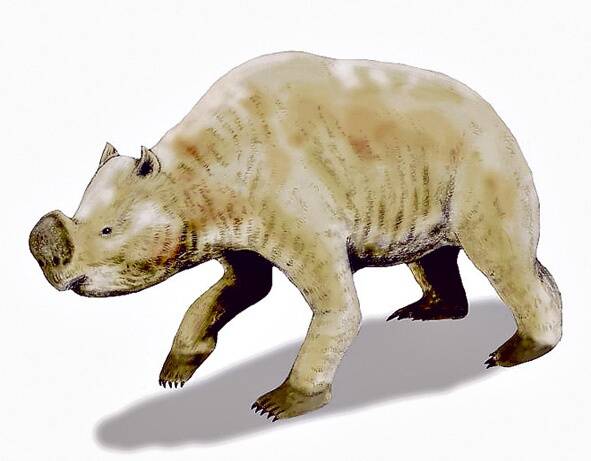



Researchers at the University of Wollongong have shed new light on just what caused the mass extinction of Tasmania's prehistoric megafauna, and the evidence it seems points squarely at humans.The fossilised remains of a large, long-necked kangaroo found by chance by cavers have provided scientists with compelling evidence that suggests Tasmania's giant kangaroos and marsupial "rhinos" and "leopards" were still roaming the island when humans crossed the land bridge between Tasmania and mainland Australia.Using the latest radiocarbon and luminescence dating techniques, Professor Richard Roberts and Dr Zenobia Jacobs of the UOW Faculty of Earth and Environmental Sciences determined the age of the giant kangaroo more accurately than ever before.The results showed the specimen had lived around 41,000 years ago - some 2000 years after the first humans settled in Tasmania."Previously, there were people who believed the megafauna were wiped out by humans alone, those who believed it was climate change alone, and the majority believed it was a combination of the two," Prof Roberts said.While climate change could have put pressure on the giant mammals, it was not the primary cause of their extinction."These animals disappeared very, very quickly and while climate could have led to their waterholes drying up, forcing them into closer contact with people, the vegetation and climate in Tasmania have in fact remained stable."We believe it was an 'imperceptible overkill' of the adolescents of these incredibly slow-producing animals that finally knocked them on the head."The study, published in Proceedings of the National Academy of Sciences of the United States, suggests that mega-fauna populations had weathered several glacial cycles with little change to their numbers before people moved in, but dropped off within a few thousand years of their arrival.Prof Roberts said the demise of the megafauna had particular resonance in the present environmental context."Wherever prehistoric people arrived - in New Zealand, Australia, North America, they made a mess of things, just like the later colonisers did," he said. "It was the same in the case of the Tasmanian tiger, by the time they realised they needed to save the species, the last one was dying in Hobart Zoo."Former University of Wollongong researcher and study co-author Professor Chris Turney said the argument for climate change being the cause of the megafauna's downfall had been "seriously undermined" by the new findings."It is sad to know that our ancestors played such a major role in the extinction of these species - and sadder still when we consider that this trend continues today."The researchers believe the study could have widespread ramifications around the world, particularly in North America where debate rages about the reasons for the mass extinction of the prehistoric mammoth and mastodon.
Subscribe now for unlimited access.
$0/
(min cost $0)
or signup to continue reading

